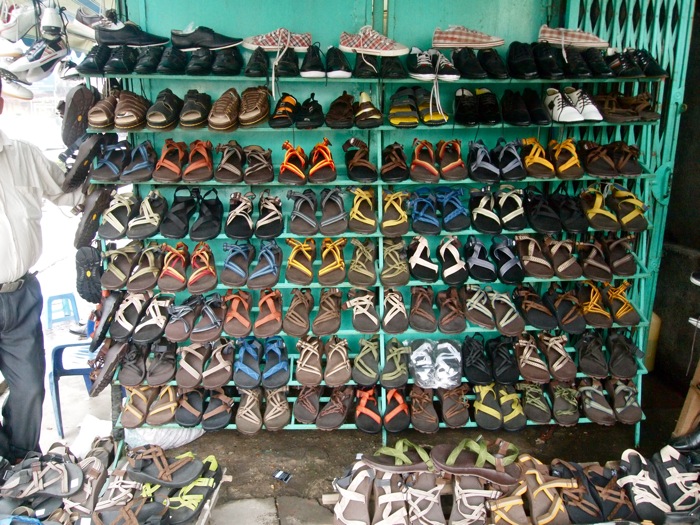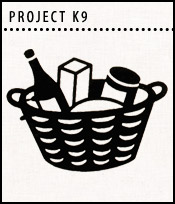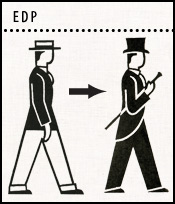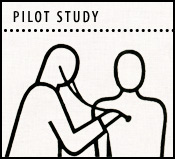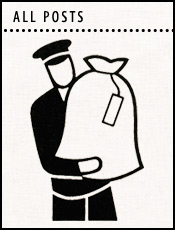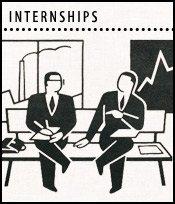June 16th, 2010
Hallelujah It’s Hanoi
The elderly Vietnamese family that had shared our compartment on the Reunification Express had already climbed down from its lofty perch by the time that Scott and I awoke. We were in the Hanoi Station, and we were just able to get ourselves vertical in time to help our — well I would not quite call them new friends, but at least new acquaintances, who appeared to tolerate our monopolization of the luggage space — to unload their bags. This appeared to heal at least some wounds, and they bid us a reasonably hearty farewell once we were out on the platform.
Hanoi was cool. Almost chilly by AsiaWheeling’s standards hitherto. In general, we are in places where existence outside air-conditioned environments is by definition sweaty. Here it was cool and breezy and gray. We unfolded the Speed TRs on the platform while a crew of railway workers arrived to wash down the startlingly dirty exterior of our train.
We climbed onto the cycles, and wheeled out of the train station, right by the horde of cab drivers and guesthouse touts who lay in wait. We took a right and headed down the street in search of a little pho and coffee. Instead what we found was stand after stand selling Chaco sandals. Chaco is my (and many other members of the AsiaWheeling team’s) preferred brand.
These were either knock offs or taken straight from the factory, for they were being sold at bargain basement prices. We stopped to further investigate, considering a replacement of Scott’s Sri Lankan faux leather sandals. Unfortunately, the gigantic nature of his feet precluded us from purchasing any sandal in their entire stock.
As we wheeled on, we commented to each other on how gorgeous this city was. Hanoi has a decidedly European feel to it, with large tree-lined promenades, and small side streets with plenty of outdoor cafes. Much of the architecture takes cues from the French, and many of the buildings are built from brick or stone.
It was just starting to sprinkle when we came by a shop that would at least be able to supply us with coffee.
As we parked the Speed TRs and made our way inside, the sky opened and began to soak the city of Hanoi. Â While the rain fell in buckets, we ordered cup after cup of absolutely delicious iced coffee.
We had shied away from the Vietnamese coffee these past few days, after our initially terrible sample, but now we were kicking ourselves, so delicious was this shop’s offering.
Let me divert the narrative for a moment to explain this glorious brew. You are given two cups, one filled with ice, and one that has a thin pool of condensed milk in it. Onto the milk cup is placed a kind of aluminum brewing device. The device is filled with coffee and then hot water. The resulting slurry is tamped down with a kind of of metal cap, and the whole apparatus is covered with a larger cap that is later used as a drip tray. The consumer of the coffee is then encouraged to wait while a thin stream of very strong and fragrant coffee drips through the device and into the cup. This is an opportunity for conversation, answering email, smoking cigarettes, and generally enjoying one’s self. The waiting period is an important part of the coffee consumption event and as such should not be taken lightly.
We were indulging in the email-answering functionality of the waiting period, and as our tab grew from four to eight coffees at this place, we feasted on one of the many free wireless networks that pervade the big cities in Vietnam. After about three hours, the rains finally stopped and we climbed back on the Speed TRs to begin wheeling around in search of a decent hotel.
We soon found ourselves in a delightful little neighborhood, filled with little food markets and spice shops. It seemed reasonably central and would make a great home-base for Hanoi. Unfortunately hotels were few and far between. It took us quite a bit of wheeling before we finally found one that fit our needs and our budget. It sported free fast wireless, and a nice comfortable room for less than we’d paid in a while.

The catch was we had to walk up seven floors to reach the room. But we figured this would be good training for our upcoming stint in Mr. Stew Motta’s apartment in Kunming, so we booked our room at the Liberty Inn. We dropped our stuff and began consulting the front desk as to noodle shop recommendations.
We were, of course, looking for Pho, but the man at the front desk convinced us that we might consider branching out into a new style of noodles. We agreed and followed his directions to a joint down the road that served nearly brothless noodles.
It was an amazing bowl of noodles. First each bowl was filled with a handful of fresh greens, onto which were piled steaming rice noodles, from there a spoonful each of spicy savory beef, deep fried crispy onion, and crushed peanuts were added. The entire bowl was blended with spicy and sweet condiments at the table and stirred relentlessly before eating.
Ah, we felt great after that bowl, ready for anything, and just revving to wheel Saigon. We took off toward the main river in the city, and when we saw a huge group of both motor- and bi-cyclists heading onto an old metal bridge, we took the opportunity to follow.
It was a long, old rusty bridge, which led across the river to the opposing hamlet of Cu Khoi. We wheeled over a number of river beds, some of which showed signs of being low for so long that people had begun to plant them with crops. On the other side of the bridge, we found ourselves in a smaller, slower city, which appeared to be where most of the Bia Hoi was produced.
Let me depart from the narrative once again to discuss Bia Hoi. Bia Hoi is a very weak home-brewed beer that is very popular here in northern Vietnam. It is made in small batches and transported in small plastic kegs all around the city on a daily basis for consumption at small street-side cafes. As we wheeled through this part of town past many small scale breweries, we could detect the warm sour stench of fermenting grains passing over us in waves. We decided we’d need to try some later that day.
The landscape was so different than I had imagined Vietnam to be. It looked more like Scotland, with overcast skies and deep green grassy hills. As we rode along, we had a choice of taking either the high road or the low road. The high road seemed to skirt around and out of the city along a great dike, while the low road snaked its way through the many small structures that made up the city itself.
We took the high road, and began pedaling hard, making our way around and out of the city in record time. The traffic was an interesting combination of cattle, fellows transporting large or oblong pieces of industrial equipment or building materials via motorbike, and dump trucks.
Soon we were riding along a river, and the city had dissolved into farmlands, industrial parks, and Communist Party offices. Finally, the road we were on T’ed into large iron bridge. I looked around the green land, dotted with bits of rust and concrete, which, for a moment, conjured up Pennsylvania coal country.
We stopped for a moment to investigate the wares of a very popular roadside seller, who was hawking crabs, large insects, and live birds. I found myself unable for a time to stop staring at a fellow who had bought two live ducks and strapped them quite violently, by the legs, upside down, to the front of his motorbike. The ducks looked none too excited about their immediate future, as they swung inches above the pavement.
Let me get this straight, though. I eat plenty of meat here on Asiawheeling, and when I am back in The Empire. I am in favor of killing and eating animals, but something about the predicament of these ducks unsettled me. It seemed like they were being tortured, strung up by the legs, being blown by the wind, flailing with their faces just inches above concrete which was whipping by at 40 or 50 kilometers per hour. I am sure that most of the experiences that animals undergo leading up to their consumption by humans could be construed in one way or another as torture. And I would not be surprised if inside the U.S., it is actually a more torturous approach to dinner than here in Asia. So, in the meantime, I am going to chalk this up as one of those cognitive dissonances one must acknowledge and schedule for later consideration. For certainly, I am not about to stop eating meat. Perhaps I’ll come up later with a justification for a more callous view on animal rights. In the meantime I’ll continue to pity my food as it suffers and turn right around and happily ask for seconds while I wipe the grease from my chin.
Back in Vietnam, we wheeled along the same high road, now taking the opportunity to divert our travels to the low road for the way back.
Here the smell of brewing beer was stronger than ever. The Speed TRs were put to a little test, scrambling over piles of garbage, fording deep mud puddles, and navigating a generally unwelcoming road. Â They passed with flying colors, bringing us finally back to the bridge, which we crossed, finding ourselves now on the other side, in the midst of a giant kitchen wares market.
We spent some time perusing the market, and purchasing some K9-related kitchen goods.
Back on the cycles, we made our way back toward our hotel, noticing quite suddenly that we were starving. But we were deep in the touristy section of town, which seemed to be filled only with expensive western-style restaurants. We scoffed at these and kept riding, calling random turns until we had made our way out of that district. Finally we found a little roadside outdoor restaurant, where we ordered some dishes with rice, and a couple of Bia Hois.
Another great thing about Bia Hoi… it’s alarmingly cheap. A glass costs about 25 cents, and is served in a very attractive thick green glass, full of tiny bubbles. The glasses generally have a big “H” stamped on the bottom.
We were squatting on tiny wooden chairs enjoying our Bia Hois and snacking on the free peanuts that accompanied them, when a man called over from the table behind us. He spoke very little English but called out to us in what he had, asking where we were from. I said “America” and though he instantly became a little more wary of us, we began to chat. He commented on our Bia Hoi and asked whether we were enjoying it. We were, quite thoroughly, and informed him. He smiled and asked whether they had such a type of beer in the U.S. We explained to him that we did not really have such a system of down-home brewers who sold beer in small batches for widespread consumption. Sure we had micro-breweries, but microbrews are trying to be distinctive, luxury goods, and most were pasteurized and regulated. Here in Vietnam, everyone was just trying to crank out this cheap, unregulated, weak, unpasteurized lager, which was the drink of choice all over the city.
I turned to our new friend, “You know the only other place I’ve heard of this type of beer being produced?” He looked blankly at me — “Russia.”
Suddenly, the man leaned in close to me. “So you’ve been to Russia?” he said. “да,” I answered. And then we were off speaking in Russian. It was so unexpected, it took me quite a while to remember how to say certain things. I explained to him that I had studied in St. Petersburg a few years back, and that we would be visiting Russia later on AsiaWheeling. He explained that he had been sent to Russia as part of his training to fight the Americans in the NVA. Now that we were speaking Russian, his whole demeanor had changed. He congratulated me, and complimented my filthy broken Russian.
“So few Americans can speak Russian,” he said, “Did you study Russian to spy on them? Are you a soldier?”
I did my best to explain that I was just a curious fellow, hated war, and had no interest soldiering. I did my best to communicate that just like Vietnam, Russia was an enemy of the U.S. at one time, but now I am hoping that friendship can replace animosity.
He really seemed to like this, and began to go on at length about Vietnam today, comparing it with Vietnam during the war. My ability to understand him was severely hampered by my poor grasp of the Russian language, but I was able to ascertain that much of what he was saying was about how much better off they are now, mostly due to the fact that Ho Chi Minh was able to re-unify the country. He also spoke at length about the Cuban Embassy, as well, which he showed me was just visible down the street. He knew that the U.S. did not have one, and commented on the proliferation of affordable Cuban cigarettes and cigars in Vietnam as highlighting one of the great drawbacks to our embargo. I agreed with him heartily.
It was then that he started talking about vodka. I think there is something about speaking Russian with another non-native speaker that gets one or both of the parties thinking about that old Russian vice. He spoke at great length about the way that Vietnam has learned from the Russians to make very good vodka. It was still somewhat early in the day, and we had quite a few kilometers yet to wheel before we arrived back in the neighborhood of our hotel, so I declined his repeated offers to drink.
The Bia Hoi is a very weak sauce. A cup varies between 2% and 3% alcohol, but I knew that if we started drinking vodka with this fellow, we would soon be in a rather compromised state. In fact, if my estimates were right, after such a hard wheel, and under the kind of peer pressure which Russian-style vodka drinking generally encourages, we would soon be more beasts than men. So I had to stick to my guns.
Despite my refusal to drink, he ordered a bottle of the Vietnamese vodka to the table, simply to prove to me that here, like in Russia, the vodka is kept in the freezer and served cold. “This is the only proper way,” he explained.
He then shook my hand repeatedly and returned to his little table. Throughout the rest of the meal, he came by from time to time to say something congratulatory and shake our hands.
Once we had paid the bill, I bid him farewell, and we climbed back on the cycles.
We had just enough time to get hopelessly lost on our way back to the hotel before night fell on this most fascinating city.
![]()


